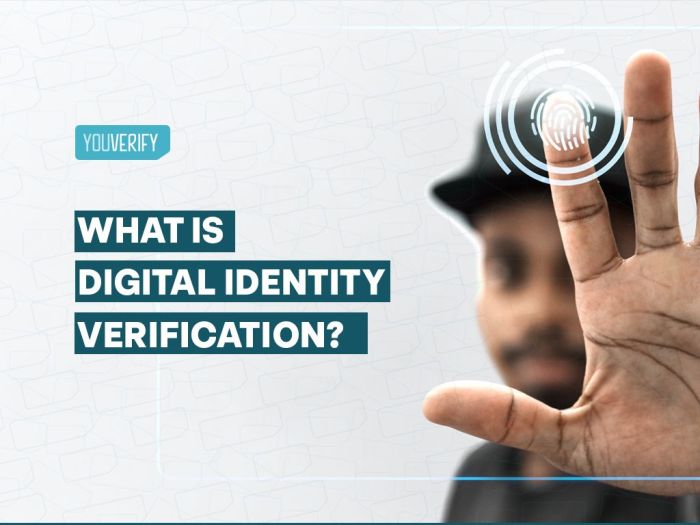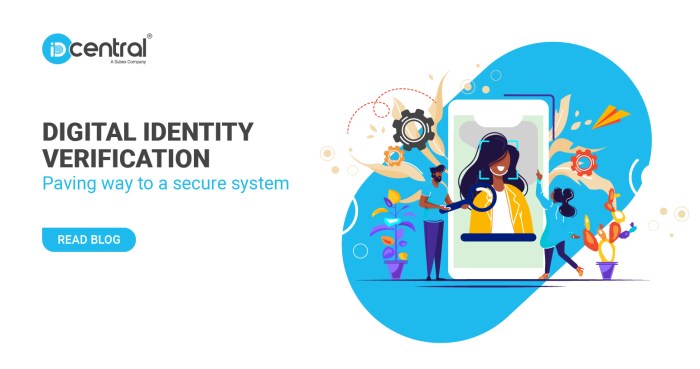How to Implement Secure Digital Identity Verification: A Comprehensive Guide
Delving into the realm of secure digital identity verification, this guide aims to shed light on the crucial aspects surrounding this topic. From the importance of safeguarding digital identities to the strategies for implementation, each section unfolds to provide a holistic view of the subject matter.
Exploring different technologies, compliance standards, and real-life case studies, this guide serves as a valuable resource for understanding and implementing secure digital identity verification.
Overview of Secure Digital Identity Verification

Secure digital identity verification is crucial in today's online world to ensure the authenticity of individuals accessing sensitive information or services. By implementing robust verification methods, organizations can protect against identity theft, fraud, and unauthorized access.
Importance of Secure Digital Identity Verification
Secure digital identity verification is essential for safeguarding personal and financial information in the digital age. Without proper verification measures in place, individuals are at risk of identity theft, data breaches, and financial fraud.
Risks of Insecure Identity Verification Methods
- Increased likelihood of identity theft and fraud.
- Potential for unauthorized access to sensitive information.
- Risk of data breaches and exposure of personal data.
Benefits of Implementing Secure Digital Identity Verification
- Enhanced security and protection against fraudulent activities.
- Improved trust and confidence among users and customers.
- Compliance with regulatory requirements and data protection laws.
Technologies for Secure Digital Identity Verification
Secure digital identity verification relies on various technologies to ensure the authenticity and integrity of individuals' identities. These technologies play a crucial role in safeguarding sensitive information and preventing identity theft.
Biometrics for Enhanced Security
Biometrics involves the use of unique physical characteristics, such as fingerprints, facial recognition, or iris scans, to verify an individual's identity. By utilizing biometric data, organizations can enhance the security of digital identity verification processes, as these traits are difficult to replicate or forge.
Role of Blockchain in Secure Identity Verification
Blockchain technology offers a decentralized and secure way to manage digital identities. By storing identity information in a tamper-proof and transparent manner across a distributed network, blockchain ensures data integrity and reduces the risk of unauthorized access or manipulation. Additionally, blockchain enables individuals to have greater control over their personal data, enhancing privacy and security.
Implementation Strategies
Implementing secure digital identity verification involves several key steps to ensure the process is reliable and secure. One of the most important aspects is the use of multi-factor authentication, which adds an extra layer of security by requiring users to provide more than one form of verification.
This could include something they know (like a password), something they have (like a smartphone for receiving a code), or something they are (like a fingerprint or facial recognition).
Importance of Multi-Factor Authentication
Multi-factor authentication is crucial in enhancing security for digital identity verification because it significantly reduces the risk of unauthorized access. By requiring users to provide multiple forms of verification, even if one factor is compromised, the chances of a security breach are minimized.
This extra layer of security adds a crucial safeguard against identity theft and unauthorized access to sensitive information.
- Multi-factor authentication enhances security by requiring additional verification beyond just a password.
- It reduces the risk of unauthorized access and adds a crucial layer of protection against identity theft.
- By combining different factors, such as something the user knows, has, or is, the overall security of the verification process is significantly strengthened.
Using Encryption for Secure Digital Identity Verification
Encryption plays a vital role in securing digital identity verification processes by encoding sensitive information to prevent unauthorized access. When data is encrypted, it is scrambled into an unreadable format that can only be decoded by authorized parties with the proper decryption key.
This ensures that personal information, such as biometric data or identification documents, remains secure and protected from cyber threats.
Encryption helps safeguard sensitive data by converting it into an unreadable format that can only be deciphered by authorized parties
.
- Encryption protects personal information from unauthorized access and cyber threats.
- It ensures that sensitive data, such as biometric information or identification documents, remains secure during the verification process.
- Implementing strong encryption protocols is essential in maintaining the integrity and confidentiality of digital identity verification systems.
Compliance and Regulations

In the realm of secure digital identity verification, compliance with key standards and regulations is crucial to ensure the protection of sensitive data and the privacy of individuals. Organizations must adhere to these guidelines to maintain trust and integrity in their verification processes.
Key Compliance Standards
- ISO/IEC 27001: This standard focuses on information security management systems, providing a framework for organizations to establish, implement, maintain, and continually improve their security processes.
- Sarbanes-Oxley Act (SOX): SOX mandates strict financial reporting requirements and internal controls to prevent fraud and protect investors. Compliance with SOX is essential for organizations handling financial data during identity verification.
- Payment Card Industry Data Security Standard (PCI DSS): PCI DSS sets security standards for organizations that handle cardholder information, ensuring secure payment transactions. Compliance with PCI DSS is necessary for businesses processing payments as part of identity verification.
Impact of GDPR on Digital Identity Verification
The General Data Protection Regulation (GDPR) has had a significant impact on digital identity verification processes by imposing strict rules on how personal data is collected, processed, and stored. Organizations must obtain explicit consent from individuals before collecting their data and ensure that data is handled securely to protect privacy rights.
GDPR compliance is essential for organizations operating within the European Union or handling data of EU citizens.
Ensuring Compliance with Regulatory Requirements
- Conduct Regular Audits: Organizations should conduct regular audits of their identity verification processes to ensure compliance with relevant standards and regulations.
- Implement Data Encryption: Utilize encryption technologies to protect sensitive data during transmission and storage, ensuring compliance with data protection regulations.
- Stay Informed: Stay informed about changes in compliance standards and regulations related to digital identity verification to adapt processes accordingly and avoid penalties for non-compliance.
Case Studies

In this section, we will explore examples of organizations that have successfully implemented secure digital identity verification, analyze the challenges they faced, and discuss the outcomes and benefits of implementing such solutions.
Example 1: Bank XYZ
- Bank XYZ implemented a secure digital identity verification system to streamline their customer onboarding process.
- Challenges faced included integrating the new system with their existing infrastructure and ensuring compliance with regulations.
- The outcome was a more efficient onboarding process, reduced fraud incidents, and increased customer satisfaction.
Example 2: Tech Company ABC
- Tech Company ABC adopted secure digital identity verification to enhance the security of their online services.
- They encountered challenges in educating users about the new verification process and overcoming resistance to change.
- The benefits included a decrease in unauthorized access, improved data protection, and enhanced trust among users.
Epilogue
Concluding our discussion on secure digital identity verification, it is evident that prioritizing security measures is paramount in today's digital landscape. By implementing robust strategies and staying compliant with regulations, organizations can fortify their digital identity verification processes and enhance overall security.
Key Questions Answered
What are the key benefits of implementing secure digital identity verification?
Secure digital identity verification helps prevent identity theft, enhances data security, and builds trust with users.
How can organizations ensure compliance with regulatory requirements for digital identity verification?
Organizations can ensure compliance by staying updated on relevant regulations, conducting regular audits, and implementing robust security measures.
Can biometrics really enhance secure digital identity verification?
Yes, biometrics provide an additional layer of security by using unique biological traits for identity verification.